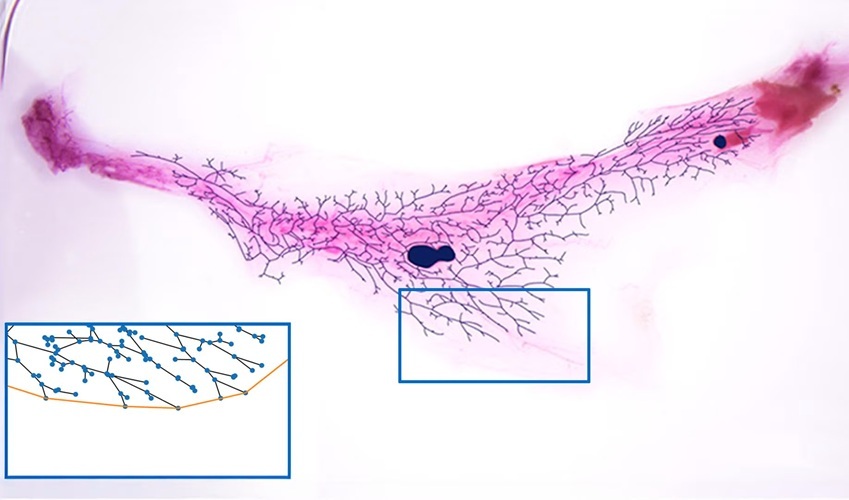Automated Tool Detects Early Warning Signs of Breast Cancer
Posted on 10 Oct 2025
Branching is a vital biological process that enables organs like the lungs, kidneys, and breasts to perform complex functions. In female mammary glands, most branching occurs after birth—during puberty and pregnancy—when milk ducts expand to prepare for breastfeeding. Disturbances in this process are closely linked to breast cancer risk. However, studying mammary gland branching is difficult and time-consuming, as traditional methods require slicing tissue and manually counting ducts under a microscope. Now, scientists have developed a new analytical tool that quantifies mammary gland branching quickly and accurately. The tool could be used to study how hormonal changes and treatments affect mammary glands or even to detect early warning signs of breast cancer.
Researchers at Cold Spring Harbor Laboratory (CSHL, Cold Spring Harbor, NY, USA) created the Mammary Gland Network analysis tool, or MaGNet, to study the structure of mouse mammary glands. The system applies principles of network theory to biological imaging, translating the complex architecture of milk ducts into quantifiable data points. Using MaGNet, researchers can measure the total length of ductal trees, the number of ducts and alveoli, and the degree of branching in stained images of breast tissue. The process is supported by NetworkX software, which plots the structures as interconnected networks for computational analysis.

The idea for MaGNet was inspired by a mathematical model originally applied to plants, which was adapted to analyze mammary gland branching patterns. In practice, users trace the ducts in digital tissue images and use computer code to calculate network parameters. The tool eliminates inconsistencies caused by manual analysis and allows scientists to visualize the entire ductal architecture at once. The study describing this method was published in the Journal of Mammary Gland Biology and Neoplasia.
Currently, MaGNet has been tested in mice, but its flexible design means it can be modified for other branching systems. The tool’s developers anticipate that it could be used to investigate how hormones, infections, or life stages—such as pregnancy and menopause—affect mammary gland development and cancer risk. In addition to basic research, MaGNet could support early disease detection by identifying subtle architectural changes in breast tissue before tumors become visible through imaging or physical examination.
The technology represents an important step toward improving breast health monitoring through quantitative, data-driven methods. With further development, MaGNet may contribute to understanding how branching abnormalities signal early cancer development, ultimately advancing diagnostic capabilities and preventative strategies in oncology.
“We’re always hunting for warning signs that arise before you can feel a lump or see anything on a mammogram or ultrasound,” said Steven Lewis, a graduate researcher in the Dos Santos Lab at Cold Spring Harbor Laboratory. “Imagine an automated tool could say there’s no tumor yet, but there are changes detectable. That’s our hope, our dream.”
Related Links:
CSHL














